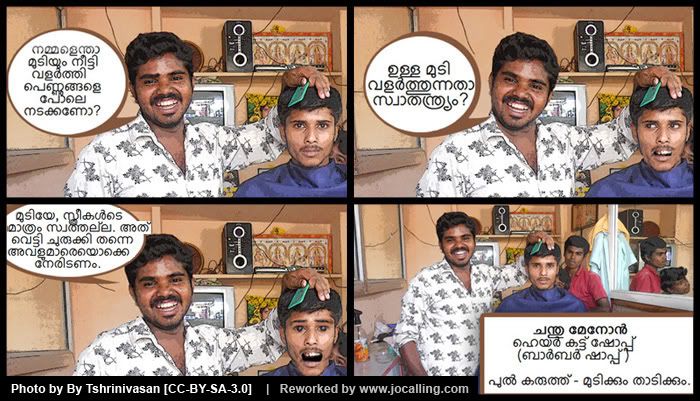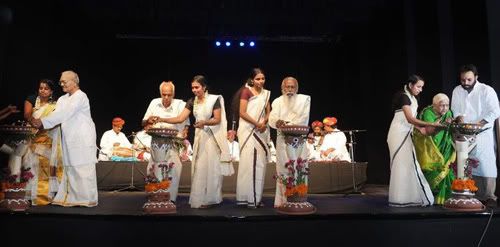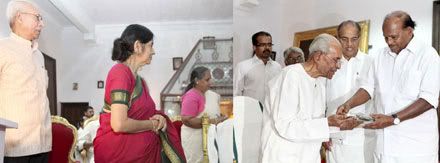 I’ve got to read an article by Roger Ebert through a Google group of movie buffs. Mr. Ebert’s article was titled “Why I’m so conservative“. Not in politics, he says, but in his thinking about movies. Basically he is saying that he likes watching movies in projection theaters than in digital format. That got me thinking about my experiences of watching movies in cinema halls and why I would prefer a home theater experience instead. (Disclaimer: This is about my experience in watching movies in theaters in India and I mention that particularly because somebody said that the theater experience in USA is different from that of here).
I’ve got to read an article by Roger Ebert through a Google group of movie buffs. Mr. Ebert’s article was titled “Why I’m so conservative“. Not in politics, he says, but in his thinking about movies. Basically he is saying that he likes watching movies in projection theaters than in digital format. That got me thinking about my experiences of watching movies in cinema halls and why I would prefer a home theater experience instead. (Disclaimer: This is about my experience in watching movies in theaters in India and I mention that particularly because somebody said that the theater experience in USA is different from that of here).
The experience of watching movies on a big screen is different. It leads you to a new world, an amazingly wider world of reality and fantasy. But watching a movie in cinema halls in India is just that – watching, and not enjoying. It depends a lot on the projector, it’s operator, the crowd, the atmosphere that the cinema halls gives you, the screen, sound and so on. If one of them fails, you would never be able to appreciate a movie for what it is.
In some theaters, they project a 70mm movie in 35mm on a 70mm screen. Sometimes it goes out of focus, scenes slightly blurred. When you watch a 3D movie, which is supposed to give you a more real cinema experience, you can see some folds and dirt marks on the screen and so you end up constantly reminded that you are ‘watching’ a movie. Sometimes our good old ‘film editors’ in the projection room do their own cuts and edits. So you abruptly jump between frames or scenes. Audio in some theaters, even the ‘good ones’, turns out to be just ‘noise’ sometimes. The ambiance that the movie halls provide also matters in enjoying a movie or giving your full attention to it. In some theaters, you’d wish they had a better cooling air conditioner and in some others you wish they had a heater. Then there is the crowd. Some would push you to the sides of your chairs and some would play games to win the space for arm rest of the chair.
You think multiplexes are good, but they are a vast abode of bored people. Some of the problems mentioned above apply to multiplexes too (or at least the ones I went to, in Bangalore). And if you are watching a Hollywood movie, you are doomed. People would laugh out aloud even at the silliest joke in an English movie which does not usually happen when they watch regional language movies. You would be left wondering if the joke was something that you did not understand because of the language. I’ve felt it as if the multiplex audience, while watching English movies, wants to convince others that they do understand the language (which is – understanding English language – considered as a sign of education and intellect in India). So you would end up hearing laughter outbursts every now and then with a semi-loud chatter. As an aside, it is largely in two types of places that I have seen people trying to convince others, mostly strangers to them, that they do understand the language and appreciate cinema – in multiplexes and film festivals.
When I watch a movie in my laptop or at home theater, none of these problems affect me. The only thing I really miss is the screen size. There are many advantages to watching a movie at home. I can adjust the light and sound as I like it. That gives me a feeling that I am also being a part of the movie presentation. Ebert says, ‘projected’ is good. I think it is eery. It gives me a feeling that somebody is hiding behind me to control what I see. That doesn’t feel free. When I was a child, I used to look behind to the source of light that came to the screen (I admit that I was just curious back then, than being frightened). When the movie originates on screen, it is like a gift that somebody’s offering you, from right in front of you. It’s a call, that says, ‘come, let’s take this trip together‘. And when I am at home, and have the freedom to control the presentation of a movie, I’m also being a part of the movie. That makes me feel good.
When I watch a movie at home, I don’t have to control or hide my feelings. I don’t have to be socially conscious. I can weep if I want to or laugh out loud when I want to. I don’t have to wipe my tears before people see it. I don’t have to worry about people seeing me weep like a baby. If it is a DVD, I can read the sub-titles at places where I did not understand the spoken language (even if it is English). I don’t see pause and rewind as an advantage though; I think it’s a distraction. When it’s just me and the movie, the line of distance between us is blurred. Sometimes I can touch a character. Or can just stroke them to console.
I’m not saying that all cinema hall experiences are bad. It’s definitely worth experiencing to watch a commercial masala movie in a full house packed with people laughing and clapping and passing on comments. But there cinema doesn’t go beyond the level of being a medium for entertainment.


 Everything is powerful as long as it is in the powerful hands. The powerless are deluded by the powerful to think they have the power when they actually don’t. That is why we remain happy with our version of democracy or the predictions of India becoming a super power in 20xx. That is also why when the clergy teaches us of the greatness and acceptance of our version of religion makes us happy that we are part of something great, while we actually do not have any role in it. The powerful plays it all – politics, religion, race, caste and what not. And the powerless are only meant to nod their heads and fooled to believe that by doing so, they are playing a larger role. The powerful knows how to work their way though and that is what this news tells us of the fishermen, whose husband/brother were killed in cold blood by the Italian marines, forgiving the accused ‘in the name of Christ’.
Everything is powerful as long as it is in the powerful hands. The powerless are deluded by the powerful to think they have the power when they actually don’t. That is why we remain happy with our version of democracy or the predictions of India becoming a super power in 20xx. That is also why when the clergy teaches us of the greatness and acceptance of our version of religion makes us happy that we are part of something great, while we actually do not have any role in it. The powerful plays it all – politics, religion, race, caste and what not. And the powerless are only meant to nod their heads and fooled to believe that by doing so, they are playing a larger role. The powerful knows how to work their way though and that is what this news tells us of the fishermen, whose husband/brother were killed in cold blood by the Italian marines, forgiving the accused ‘in the name of Christ’.



 When Mar George Alancherry was ordained a Cardinal, the newspapers wrote about how humble he is and how much he respects the Indian tradition with wearing a
When Mar George Alancherry was ordained a Cardinal, the newspapers wrote about how humble he is and how much he respects the Indian tradition with wearing a  How do you judge a society’s morale and progress? Is it possible to judge them by taking a look at how the society treats it’s women and children? If so, Keralam has shown an example of it’s morale and progressiveness by the incident of a minor girl being sexually abused. The incident took place in the coastal village Mangalam in Alappuzha district. A 12 year old girl was sexually abused by her neighbor who is a father of two children. The girl did not feel well after the incident and was afraid she could get pregnant so she shared it with her friend in the school.The friend shared it with her family.
How do you judge a society’s morale and progress? Is it possible to judge them by taking a look at how the society treats it’s women and children? If so, Keralam has shown an example of it’s morale and progressiveness by the incident of a minor girl being sexually abused. The incident took place in the coastal village Mangalam in Alappuzha district. A 12 year old girl was sexually abused by her neighbor who is a father of two children. The girl did not feel well after the incident and was afraid she could get pregnant so she shared it with her friend in the school.The friend shared it with her family.